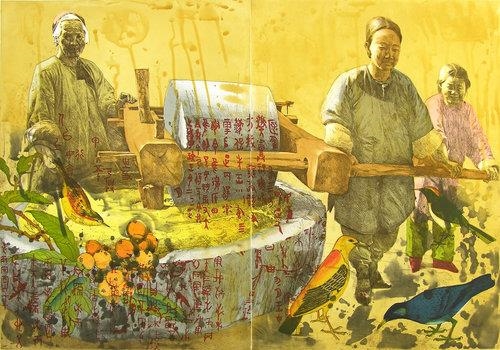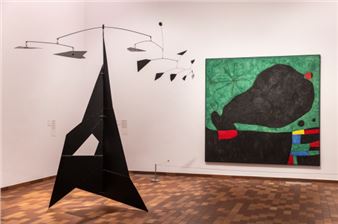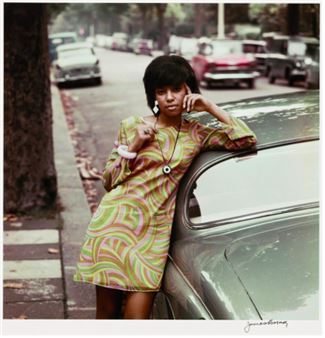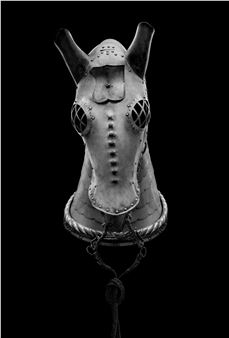Working Women: Millstone
Hung Liu was born in Changchun, China in 1948. She grew up in Beijing during
the time Chairman Mao and the People’s Republic of China. During the Cultural
Revolution, she was assigned to work with peasant farmers who became the subject
for many of her early photographs and drawings. Liu eventually enrolled at the
Revolutionary Entertainment Department of Beijing's Teachers College to study
art and education. After graduating in 1975 she began teaching art at an elite
Beijing school, Jing Shan, but later attended the Central Academy of Fine Arts
where she majored in mural painting. In 1980 she began studies in the visual
arts program at the University of California, San Diego.
This particular print references the pivotal, yet often overlooked, role
women played in traditional Chinese culture. It is one of several tributes by
Liu to the manual labor performed by women throughout China’s history, but
especially during the Cultural Revolution. She chose the mundane act of milling
and left the laborers anonymous in order to emphasize the universality of the
scene. One of Liu’s primary intentions behind works such as Working Women:
Millstone is to explore the conflicts between personal and national
identity.

Recommended for you
Hung Liu was born in Changchun, China in 1948. She grew up in Beijing during
the time Chairman Mao and the People’s Republic of China. During the Cultural
Revolution, she was assigned to work with peasant farmers who became the subject
for many of her early photographs and drawings. Liu eventually enrolled at the
Revolutionary Entertainment Department of Beijing's Teachers College to study
art and education. After graduating in 1975 she began teaching art at an elite
Beijing school, Jing Shan, but later attended the Central Academy of Fine Arts
where she majored in mural painting. In 1980 she began studies in the visual
arts program at the University of California, San Diego.
This particular print references the pivotal, yet often overlooked, role
women played in traditional Chinese culture. It is one of several tributes by
Liu to the manual labor performed by women throughout China’s history, but
especially during the Cultural Revolution. She chose the mundane act of milling
and left the laborers anonymous in order to emphasize the universality of the
scene. One of Liu’s primary intentions behind works such as Working Women:
Millstone is to explore the conflicts between personal and national
identity.
Artists on show
Contact details


 ARTISTS
ARTISTS















